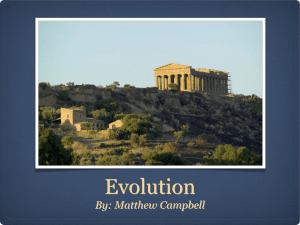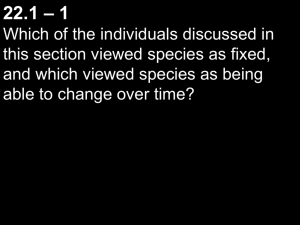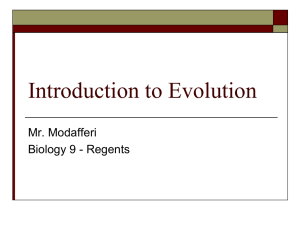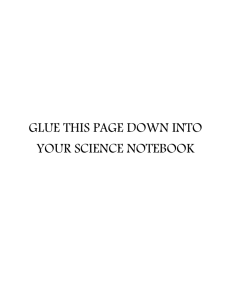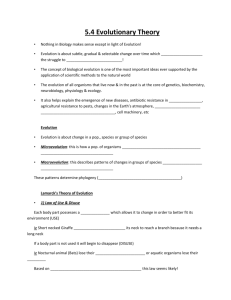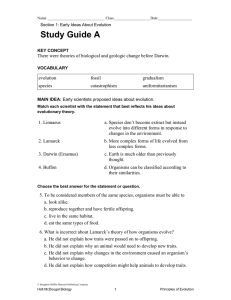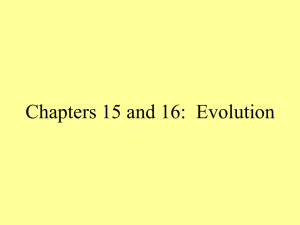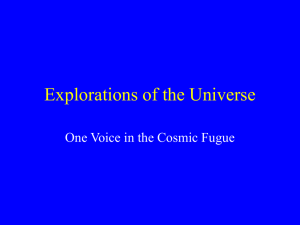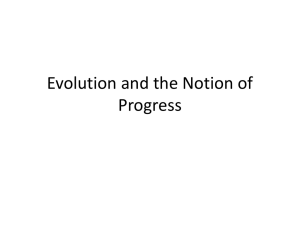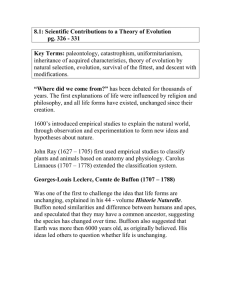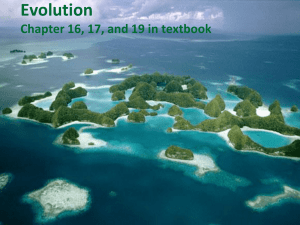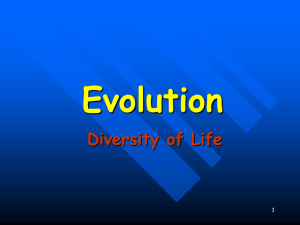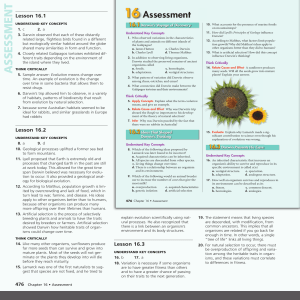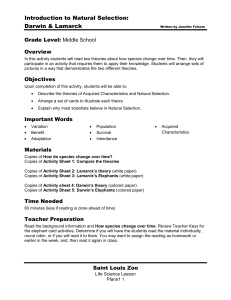Lesson 2 - Adaptation and Heredity student notes
advertisement
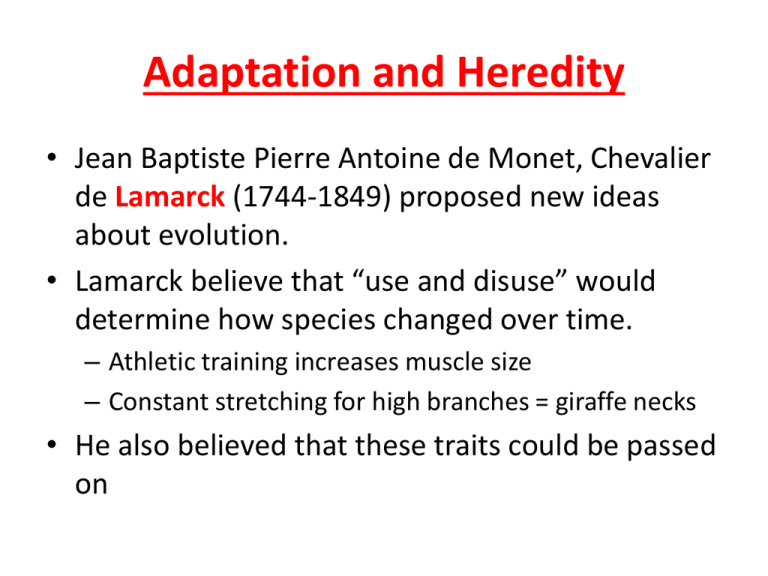
Adaptation and Heredity • Jean Baptiste Pierre Antoine de Monet, Chevalier de Lamarck (1744-1849) proposed new ideas about evolution. • Lamarck believe that “use and disuse” would determine how species changed over time. – Athletic training increases muscle size – Constant stretching for high branches = giraffe necks • He also believed that these traits could be passed on • But he did propose that species evolve over time in response to their environment, and changes are passed on over generations. • Charles Darwin began tracking observations in 1837, collecting data which he would use to create his theories on evolution. • Much of his work is based on biogeography: the study of geographic distribution of organisms. • Remote islands provided him a unique area to study, finding animals with unique behaviour and no fear of humans. Darwin’s Theory of Natural Selection • Individuals born with an advantage (adaptation) would have the best chance for survival and then propagate; therefore increasing the strength of the species. • Note: – Individuals ADAPT, populations EVOLVE. – A single change does not represent evolution until it causes a population change. Example of natural selection • Darwin’s finches on the Galapagos Islands – The only feature that changed is the size and shape of their beaks. – Occurred due to isolation and chance. • Natural Selection: – Works on the appearance of phenotypes, not genotypes that produce the trait. – Reduces, but does not eliminate, the range of phenotypes. – Shifts populations phenotypes based on environment. Key Points of Natural Selection • • • • Individuals within a species vary in many ways. Some of this variability is inheritable. Members of the same species compete. Organisms produce more offspring than the environment can support, so only some will survive. • Individuals with favourable variations are more likely to survive. • As these individuals contribute proportionately more offspring to succeeding generations, the favourable generations will become more common. Other Supporting Evidence • Many organisms have homologous features: – Similar structures evolved with different functions. • Many organisms have analogous features: – Structures that perform similar functions but without the same structures or origins. • Many organisms show vestigial features: – Missing or non-functioning structures that are found in an organism. • What Affects Evolution?? • Convergent Evolution – two species become similar due to environmental pressures. • Divergent Evolution – two or more species become increasingly different due to environmental pressures. • Coevolution – the evolution of one species as a response to the evolution of another species.

